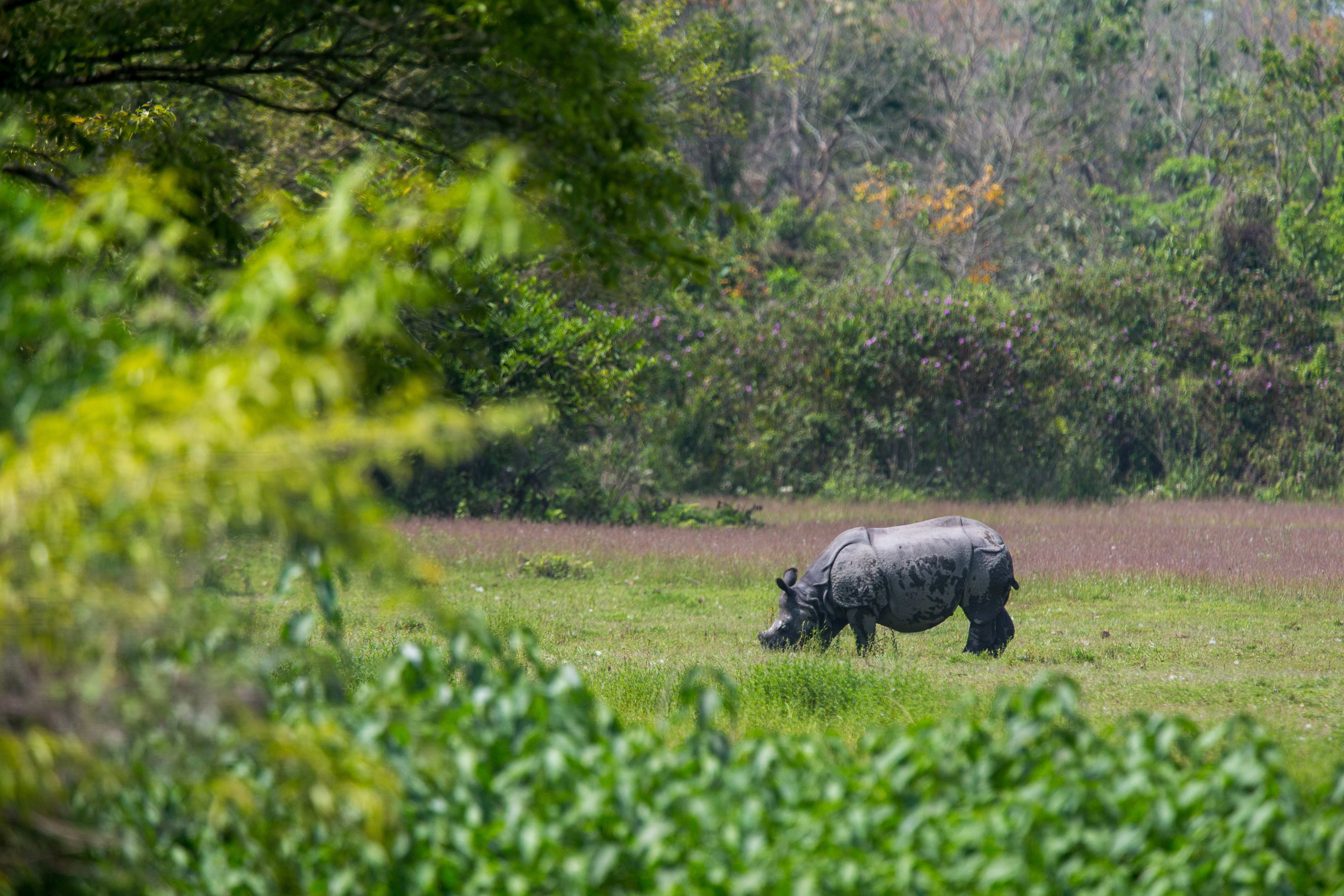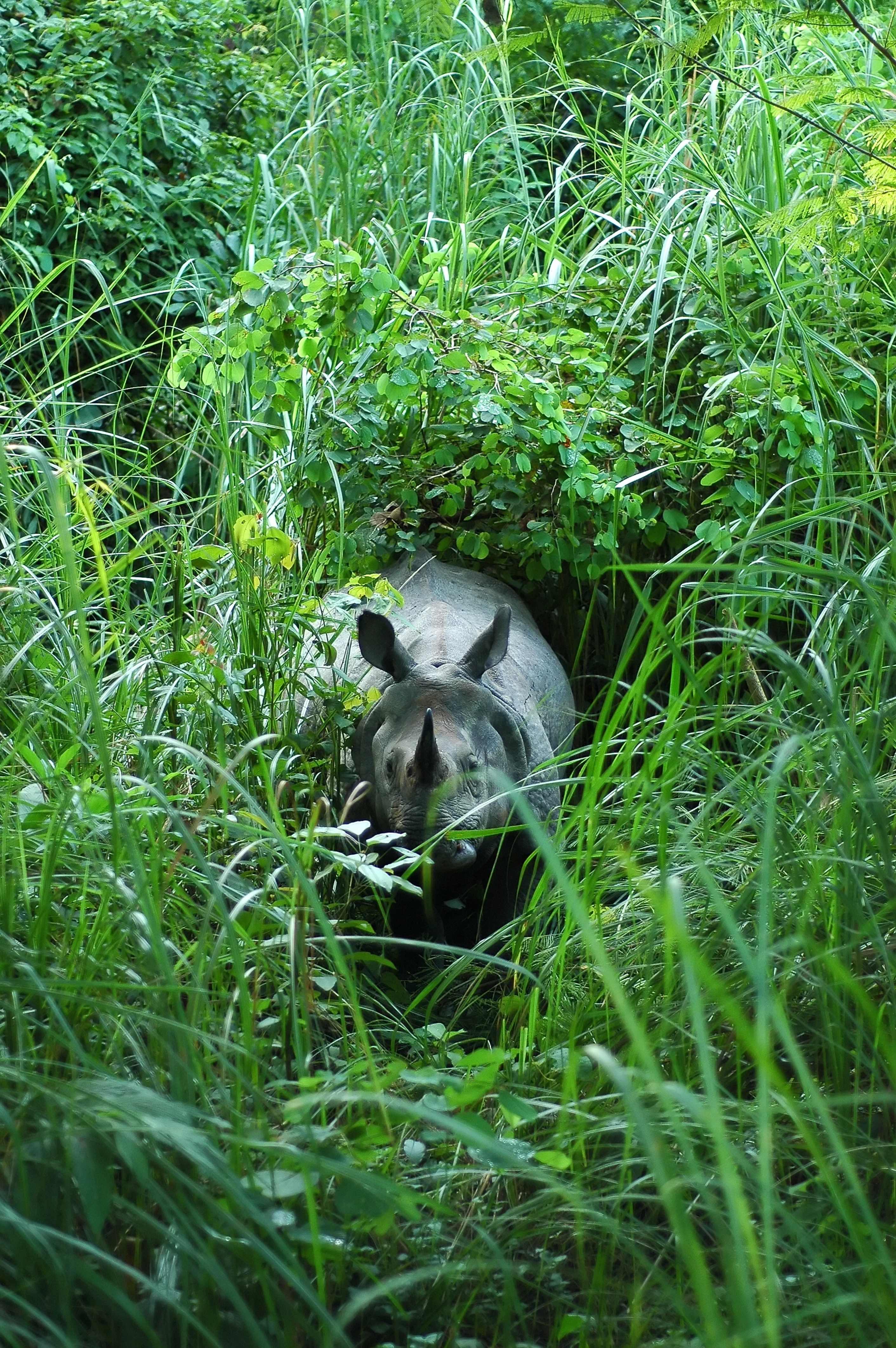Clearing the Way for Rhinos in Manas National Park
In March of this year, IRF and its partners translocated two female greater one-horned rhinos to India’s Manas National Park, increasing the population to 40. This was the 7th translocation under the guidance of the Indian Rhino Vision 2020 program (IRV2020), which established an initial population of 18 in 2009.

Greater one-horned rhinos currently number more than 3,600 in India and Nepal. India’s state of Assam holds nearly three-quarters of the world’s greater one-horned rhinos. Sadly, the species has been driven from many of the areas where it used to be common.
Full recovery of greater one-horned rhinos depends not only on protecting the species where it has managed to survive but also reintroducing them to places from which they’ve disappeared. Manas was identified as one of four new locations for reintroduction. In addition to the rhinos, habitat is actively monitored in the park to ensure health.

Of the 100 worst invasive species on Earth, 11 occur in India. In Manas, two alien invasive plants, Chromolaena odorata and Mikania micrantha, have been identified and are particularly harmful to the grassland habitats of greater one-horned rhinos.
These rhinos both graze and browse for food, and the invasive species can destroy the grassland food sources. IRF is collaborating with partner Aaranyak on a proposed five year project to remove the invasive species. The initiative will not only help secure rhino habitats, but also aid in multi-species conservation, which are grassland dependent.
There is not one solution for habitat management. It requires a coordinated effort of multiple partners and programs along with passionate supporters of wildlife conservation. IRF is dedicated to supporting these efforts for the health of rhinos today and into the future.
Learn more about our work with greater one-horned rhinos here.
